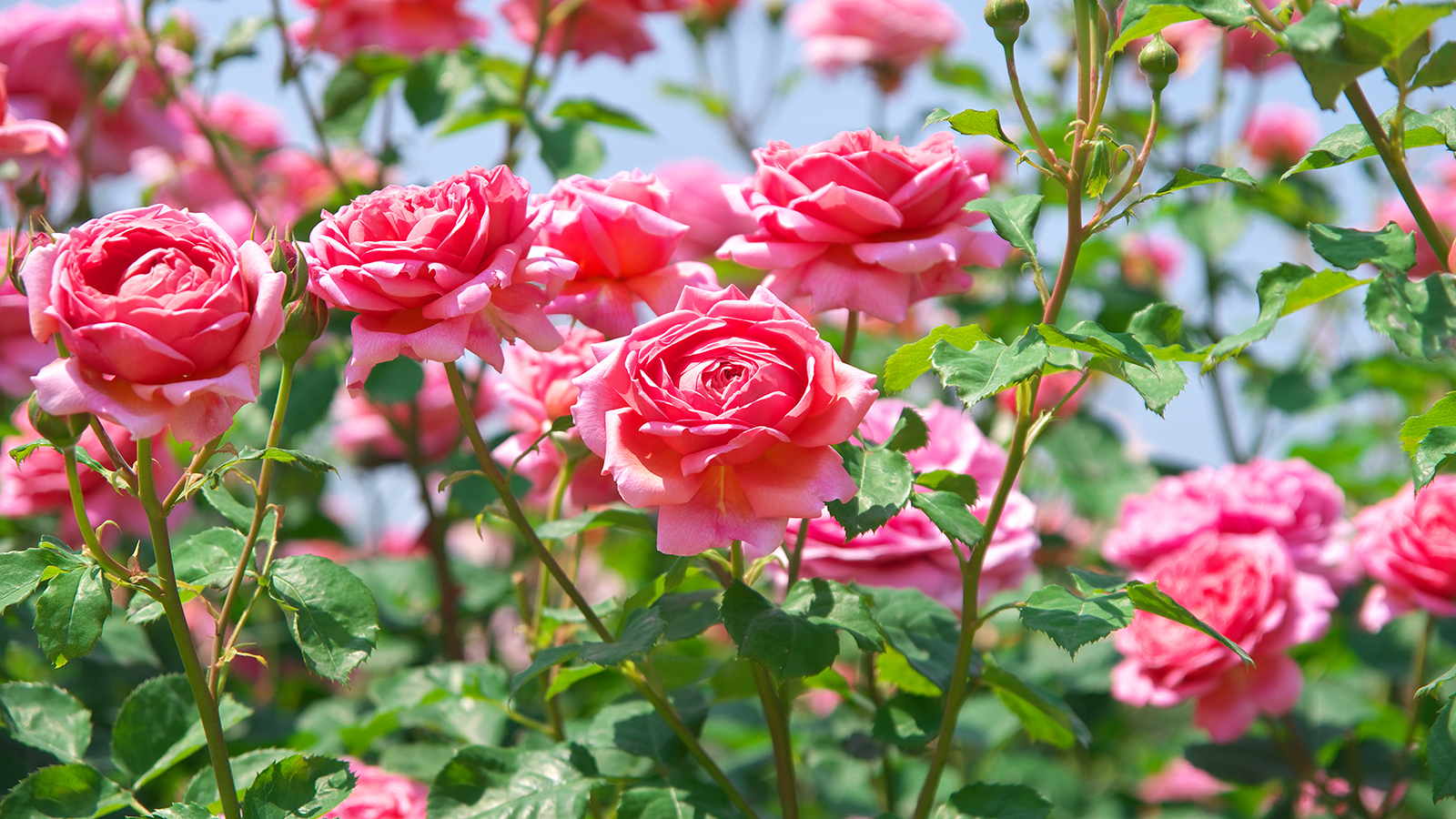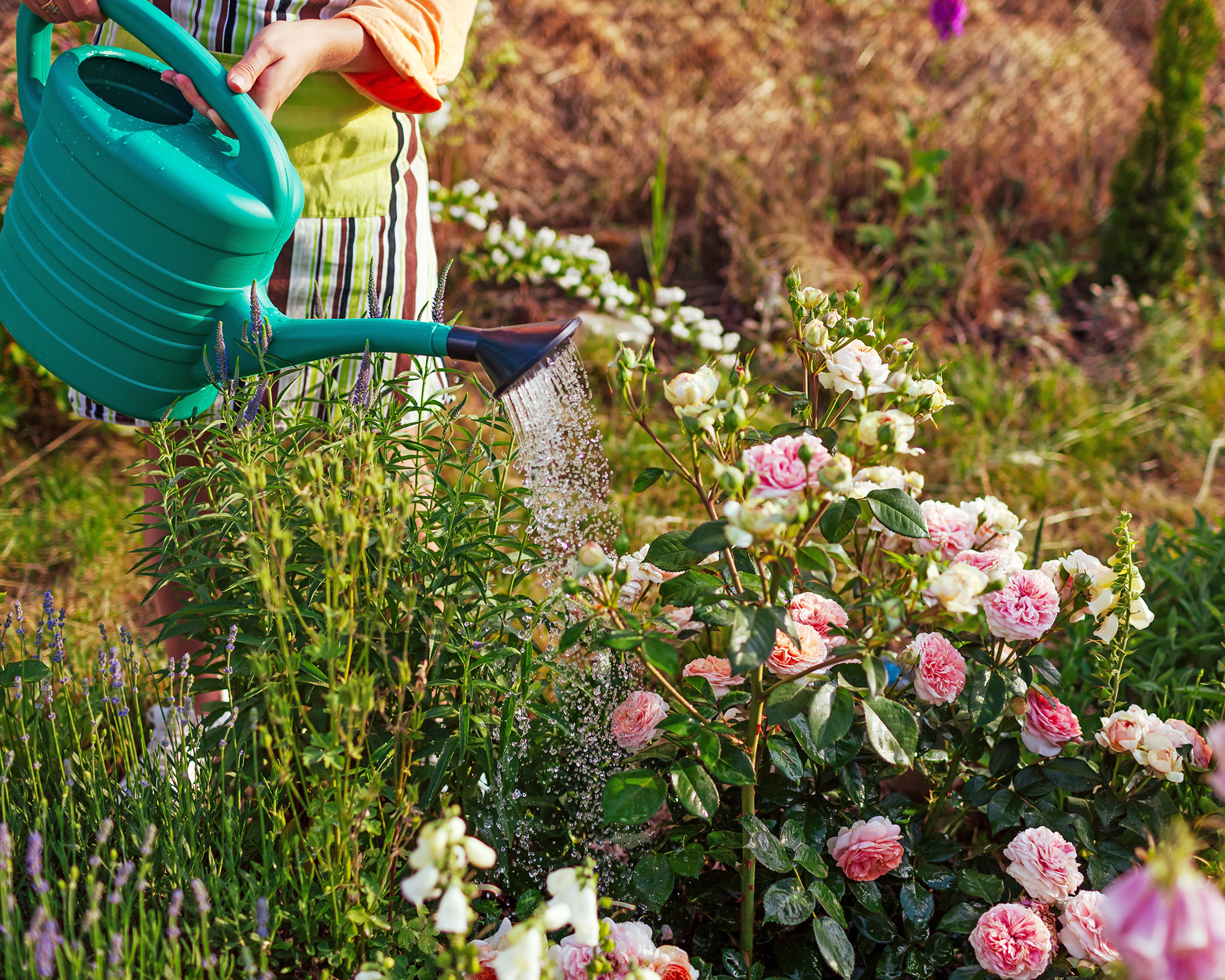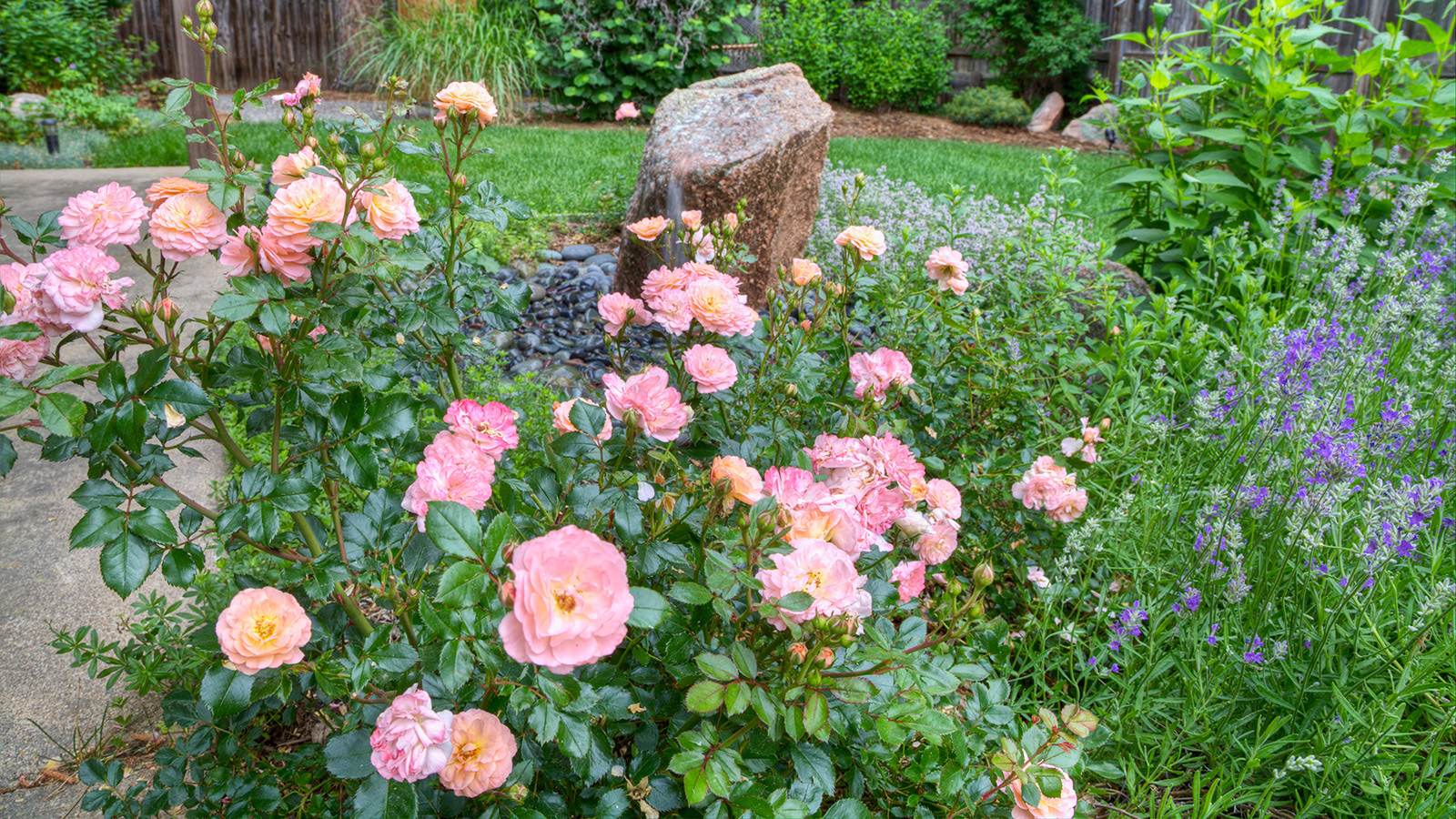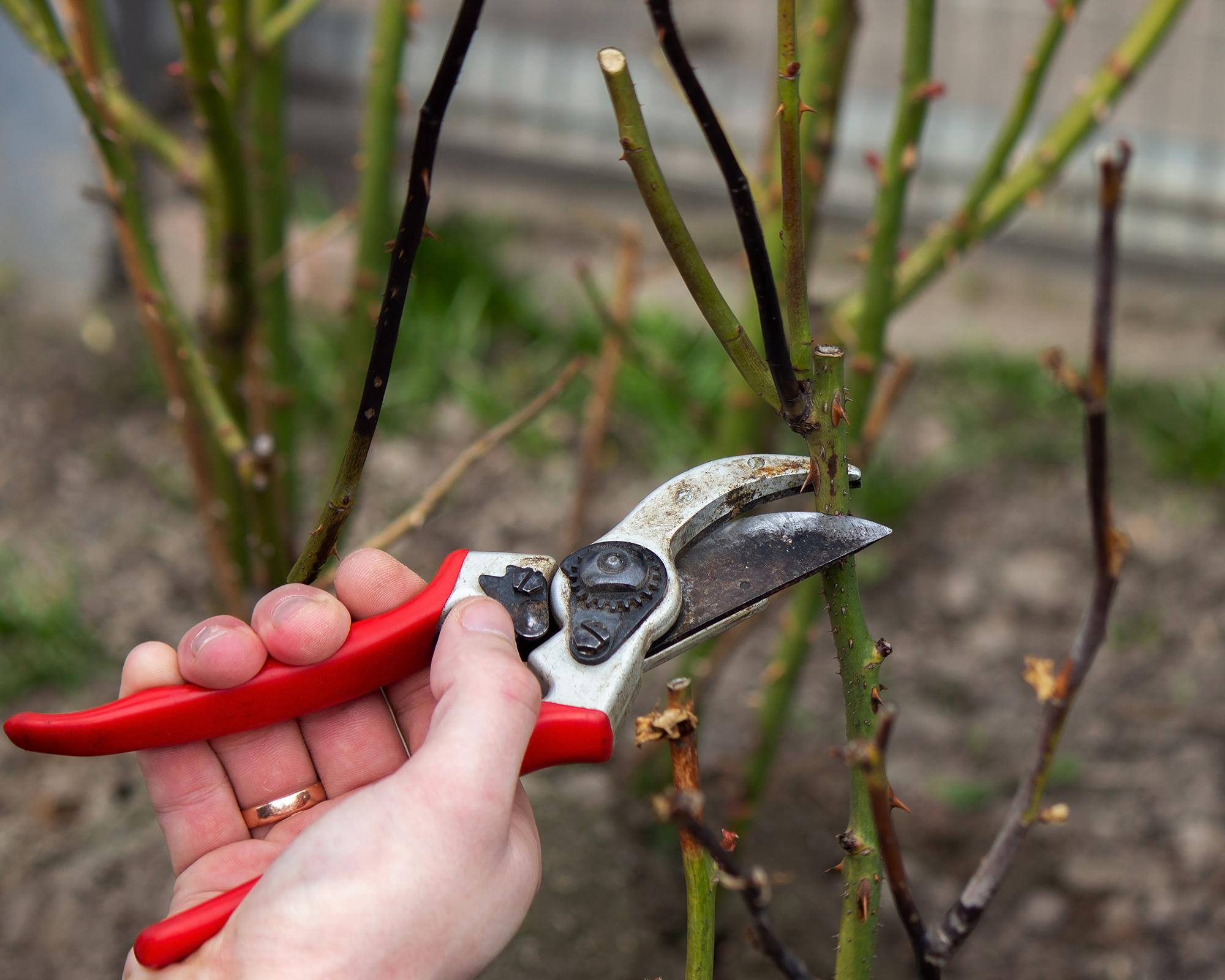How To Save A Rose: 8 Fixes For Failing Shrubs
Nurture your struggling rose plant and restore its vitality with these expert tips for solving common issues – from pests and diseases to lapses in care.

Melanie Griffiths

Roses are cherished for their unparalleled beauty and fragrance. However, the shrubs can fall victim to a host of problems that impact their health and appearance. It takes a dedicated gardener to grow a rose garden full of perfect specimens, but learning how to save a rose is extremely rewarding.
Depending on where you live, roses may be more susceptible to certain pests and diseases. Cultural conditions such as watering regimes, pruning methods, and rose deadheading mistakes are also potential issues that can cause a shrub to decline in health.
The first step in reviving a struggling rose is to identify the underlying issue. Regularly inspect your plant for any signs of stress, pests, or diseases, and assess environmental factors. Early detection and intervention are key to maintaining healthy roses.
Tackle these common issues, and with a little patience and consistent care, you will be able to save your rose and enjoy its beautiful blooms once again.
1. Rethink Your Watering Routine
Watering roses is a vital part of their care. Get it wrong and plants will soon experience health issues.
Underwatering is a common cause of plant decline, resulting in leaf wilt and stunted growth. The edges of the leaves will often turn yellow, and the area will get crusty and dry. Flowers will also be affected, going limp and fading prematurely.
When plants underperform, however, gardeners may overcompensate with too much moisture. Overwatered plants will have yellow veining or chlorosis in the leaves. They may also develop root rot.
Sign up for the Gardening Know How newsletter today and receive a free copy of our e-book "How to Grow Delicious Tomatoes".
Roses need water every other day on average in the summer. Water deeply to encourage deep root growth, and avoid overhead watering to prevent fungal diseases. Use a targeted drip system to direct moisture to the roots.
Rather than watering to a schedule, regularly check the top two inches of soil for moisture. Push your finger down to the knuckle – if the soil feels dry, then it's time to water.
Maintaining consistent soil moisture is also important, especially during dry periods. Mulching roses can help retain moisture and keep roots cool.

2. Check Light Levels
When a rose is struggling, sometimes the simplest explanation is that it doesn't have enough sunlight. Roses are happiest in full sun and planting them in a shady spot will result in weak, stunted growth and fewer flowers.
Check your rose's position and ensure the plant receives at least six hours of direct sunlight daily.
If your rose is in a shaded location, consider transplanting it to a sunnier spot. The best time to do this is in early spring, before the plant puts on new growth. However, if the shrub simply can't wait, you can move it in summer, avoiding periods of high heat and drought.
3. Improve Soil Health
Healthy soil is crucial for the revival of a struggling rose plant. Roses will grow in various soil types, but they prefer well-draining loamy soil that is rich in organic matter.
When they sit in clay or heavy soils the excess water may not percolate away, leading to root rot.
You can amend soil around existing plants by mixing in compost or well-rotted manure. This will improve soil structure and fertility.
Also, check the soil pH – roses ideally need a pH of 6-6.5 for healthy growth. If the soil is too acidic or too alkali, it can result in poor plant health and stunted growth. Acidic soil can be amended with lime; alkaline soil with sulfur.

4. Add Fertilizer
Roses need plenty of fuel to grow leaves and stems – but also those magnificent blooms. When a plant isn’t receiving its nutrient needs it will develop symptoms such as chlorosis, buds that fail to form, and limited growth.
Poorly fed roses are more at risk of pest and disease problems than a plant that has the right amount of nutrients available.
If you haven’t fed them recently, you may be able to encourage fresh growth by fertilizing roses. Use a balanced fertilizer formulated for roses to deliver the right type of nutrients. Follow the manufacturer’s instructions for application rates and times.
Fertilize in early spring and continue feeding every 4-6 weeks until late summer. Avoid fertilizing in the fall, as this can promote new growth vulnerable to winter damage.
However, don't overfeed roses. When the plants are excessively fertilized, the roots can burn, the foliage will develop dark patches, and an overgrowth of leaves will take over with few flower buds.
5. Prune Damaged Areas
Roses really need pruning. Not only do we prune to remove dead wood and shape the plant, but more importantly they need to be pruned at the right point on the stems to promote flowers.
Remove the growth by a third in late winter, cutting canes just above a growth node. Slant the cut so water and dew will fall away from the injury and not sit upon it.
Die-back is the result of unhealthy pruning practices where the cut is not made at a growth point. This unsightly situation leaves brown and black dead stems sticking out of the plant.
If a rose is underperforming in the summer, try removing any dead, damaged, or diseased branches. This will ease congestion and allow the plant to focus on new growth. Also remove rose suckers growing from below the graft line, which steal the plant’s energy and limit new growth potential.
Use sterilized, sharp pruning shears to make clean cuts. Remove any fallen debris around the plant base as well, as it can harbor pests and diseases.

6. Tackle Pests
Examine your rose plant closely for signs of pests – some are more obvious than others, but all will place stress on the plant. Inspect the leaves for bugs and damage, including the undersides, and look for flower buds that fail to open.
Common rose pests include aphids, Japanese beetles, leafcutter bees, scale, curculio weevils, and thrips
Insecticidal soap, neem oil, ladybugs, handpicking, and systemic insecticides are all ways of combating insect pests. Only use insecticides as a last resort.
However, the best pest defense is a happy plant. Providing good care and ensuring the health of the plant means it can withstand small invasions of snacking insects.
In the long term, attract beneficial insects, such as ladybugs, to help control pests. Plant a diverse mix of native plants to nurture wildlife and promote biodiversity.
7. Treat Disease
Black spot, powdery mildew, rust, canker, and more fungal diseases are all common rose problems that will affect the plant’s health. Check the leaves for signs of infection.
Foliar diseases like black spot won’t kill the plant but can reduce its vigor as leaf loss prevents photosynthesis. Cankers can allow even more diseases into the vascular system of the plant or even girdle the stems, preventing the movement of water and nutrients.
There are many fungicides for use on various diseases, including natural remedies for black spot. Keep the plants pruned for good air flow and don’t crowd them too close together. Make sure the soil drains well. Avoid watering overhead and splashing leaves and stems with muddy water.
Sterilize your pruners between cuts and remove any debris below the plant that could harbor fungal spores.
In the future, consider selecting varieties with resistance to the various diseases common in your area.
Viral diseases can also spell disaster for plants. Look out for rose mosaic and rose rosette disease. Rose mosaic produces yellow lines, rings, or patterns on the leaves in spring. Rose rosette disease produces irregular growths called witches' brooms.
There is no treatment for rose mosaic and the bush must be destroyed. Rose rosette is caused by a tiny insect, the eriophyid mite. Unfortunately, there is also no treatment for this disease and the plant must be removed.

8. Treat Chemical Damage
Spraying herbicides when it's windy out is a bad idea. The wind catches the spray and moves it wherever it wants which is not necessarily where you want the chemical. This is called drift and is a common occurrence during weed spraying.
Glyphosate and other chemicals can severely damage plants if the chemical gets on the leaves. In roses, the foliage will stunt, malform, and curl on itself. It discolors, spots, and the edges get dry and crunchy. Overall the plant is stunted and no new growth occurs as the plant valiantly tries to save itself from the poison.
If only a few branches have been affected, prune these out and baby the rest of the plant to recover. If the whole plant got sprayed there may be nothing you can do to save it.

Bonnie Grant is a professional landscaper with a Certification in Urban Gardening. She has been gardening and writing for 15 years. A former professional chef, she has a passion for edible landscaping.
- Melanie GriffithsEditor in Chief